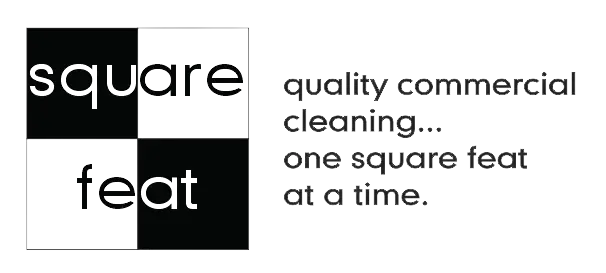Don’t underestimate the significance of a humble floor mat. In the question of useful features, they are on par with any piece of furniture and the detail added to the interior. They can ensure safety and protect the floors, but you must choose the right mat according to your office cleaning needs.
In this article, we will discuss this undeserving unnoticed thing and give some practical advice on selecting the right floor mat that will suit your conditions. Read on to understand how investing in a mat for your floor can help.
Benefits of Using Floor Mats
Mats provide many benefits; let’s discuss these in detail:
- Floor protection. If your facility has wood floor covering, the proper mat will help protect it from scratches and excessive wear in high traffic areas, where most visitors pass every day. Mats can postpone the need to refinish these floors. Mats are much less expensive than refinishing or even replacing these floors. The cost benefit is obvious.
- Safety. Well-designed mats in strategic locations help prevent slips and falls. This will help reduce the number of potential injuries. In wet environments, the traction a mat provides for damp shoes is higher than the glib surface of the floor. As a result, potential injuries are avoided.
- Cleanliness. A mat act as a dirt trap. Any dirt and debris tracked in from outside stay trapped on the mats. Floors stay cleaner than if there are no mats at the entry doors. Research indicates that most people subconsciously wipe their feet on a mat to ensure their shoes are as clean as possible before entering the building. This is when a mat is present at an entryway. Use mats at entryways for this “reflex” behavior to help maintain the floor’s cleanliness.
- Design. Mats are not just practical; they can also add a decorative touch to your entryways or hallways. Select a mat that complements other colors selections and design features at the facility.
Not bad for a small mat, is it? Now, when you understand the value of floor mats and think about ordering some for your building, consider something else. There are several types of mats, and it’s easy to get confused by this variety. So, read the article to the end to get all the information.
Types of Mats
We can divide the mats into several categories depending on the palace and the purpose of their use. All types have pluses and minuses; therefore, choose carefully. If you put the wrong mat in front of the entrance, it can be useless or even harmful. Size is equally important. Understand the area needing to be covered by the mat for the best results.
Entrance Mats
These little guardians have a purpose both inside and outside of the facility. It’s the first line of defense against dirt, soil, and moisture. You will achieve the best result if the visitor takes 8-10 steps on the mat; this distance ensures most of the dirt is trapped. It means that ideally, you should cover fifteen feet in front of the exterior entrance and about fifteen feet of the interior starting at the entrance.
Entrance mats are usually made from different synthetic materials like nylon, vinyl, polypropylene, or blends. They have rough or ridged structures to collect more dirt from the soles of the shoes. Most commercial door mats have a “drainage” system to prevent moisture from rain and melted snow from being transferred further into the building.
The backing is typically made from rubber or another material, ensuring the proper grip with the floor surface and preventing the risk of mat movements. It’s the necessary safety requirement. If the mat is moving on the floor, it can cause injuries to the visitors.
Scraper Mats
You can use these strong and durable mats on the exterior in front of the entrance for the visitors to wipe their feet. They can be made from rubber or at least have rubber backing. Their ribbed structure cleans the dirt and water from the visitor’s shoes and thus prevents them from slipping on the wet entrance floor. Furthermore, they are resistant to oils and grease, and their service life is extremely long.
Scraper mats don’t have to be large. Often a couple of square feet are enough. Scraper mats provide an initial shoe cleaning for mud, slush and grime. If you are not planning to use an interior doormat, increase the size of the scrapper mat.
Wiper Mats
These mats can be the best complement for the scraper mats. They usually have two layers: the lower rubber backing for the firm contact with the floor and the rough fabric coating for water absorption. The rubber layer prevents water and oils from harming the floors and securing the mat in the desired position on the surface.
You can calculate the size of these mats, as shown in the example with doormats. Include the size of the scrapper mat in the calculation: if you choose to use one, reduce the length of the outer part of the wiper mat respectively.
Oil Absorbent Mats
These mats are not as common in commercial buildings. As you can guess from their name, they are designed to absorb oil or grease from shoes and protect the floor covering. Such mats are the frequent equipment in facilities where oil is a problem, for example, in auto repair shops and warehouses.
These mats have two layers: one from rubber and the other from cotton. Their size is calculated depending on the facility features and can vary dramatically. Make sure that the covered area is large enough to clean the shoes from oil and grease and protect floors from staining.
Anti-Fatigue Mats
These mats don’t protect the floor; they protect your workers. Their special structure reduces stress caused by standing for a long time. As a result, these mats are typically used in commercial kitchens, laboratories, and behind service counters. They work well for any area where people must stand for extended periods of time during working hours.
Anti-fatigue mats are made from a special cushioning material. It squeezes with every step and stimulates feet and legs, reducing the stress of the long-standing. Sizing can be determined based on the room area. Therefore, size these mats for each room according to the dimensions of the specific work area where it will be used.
Cleaning and Maintenance
To ensure the best results and the maximum service life, mats of all kinds require proper care. Without regular cleaning, dirt buildup inhibits their function. Here are a few of the cleaning procedures necessary to keep the mats in good condition.
Vacuuming
Your visitors bring a lot of street dust and dirt on their shoes, so regular vacuuming is necessary. Vacuuming mats placed near the doors are recommended daily or at whatever frequency your office cleaning service cleans. Ask your janitorial service to rotate the interior mats on a regular basis after vacuuming to help even out wear patterns during their office cleaning routine.
Wet Cleaning
Exterior rubber and vinyl mats at the entrance can be cleaned with water. It is easiest and most effective to use a regular garden hose. Power washing or even a portable car wash can also be used for this job for especially tough jobs.
Every one or two weeks, the mats should be cleaned with soap. In the rainy season or during the spring and autumn months, consider the increase of the cleaning frequency. Obviously, the mats should be removed for such washing, so it’s wise to buy two sets of mats and change them. You can also use neutral cleaning agents to help remove stains and spots. Oil based stains may need a degreasing agent. Make sure that the agent is suitable for certain mat material and try it first in a small area.
For interior mats, carpet cleaning equipment can work well depending on the material the mat is made of. If your facility has periodic carpet cleaning done, ask your service provider if the interior mats can be cleaned in conjunction with the carpeted areas. This will provide a deeper cleaning than regular vacuuming.
Drying and Care
After washing or cleaning with soap and water, mats require proper drying. Don’t fold it or place it in a standing position. Spread it evenly and make sure it’s completely dry before placing it back. The presence of water can cause mold formation and a foul smell.
Also, don’t forget about the floor under the mat. Small dust particles can scratch the floor; therefore, everyday wet cleaning is a must. During this procedure, don’t ignore the rubber backing of the mat and clean it with a wet cloth too.
Under the feet of the visitors, mats experience wear. To increase their service life, change the position of the mate regularly. You can rotate square mats and turn the mats of other shapes. It ensures even wear, and as a result, you can use mats longer.
When mopping resilient floor surfaces with mats present, your janitorial service should remove the mats before mopping. This will prevent water encroachment underneath the mats which could lead to mold and mildew or potential water damage to floors.
Hopefully, this article has been helpful in educating you of the importance of mats. Mats will help preserve the floors, save on maintenance costs, and potentially save you money on renovations. Mats help ensure the cleanness of entryways and corridors, complement the interior, and increase safety by reducing the risk of slip and fall. They help to trap dirt at the door to provide a cleaner environment in the rest of the facility. Proper mat placement and regular maintenance by your office cleaning service leads to a safer, healthier environment for visitors and staff. When viewed in this light, entrance mats are a small investment with big payoffs!



